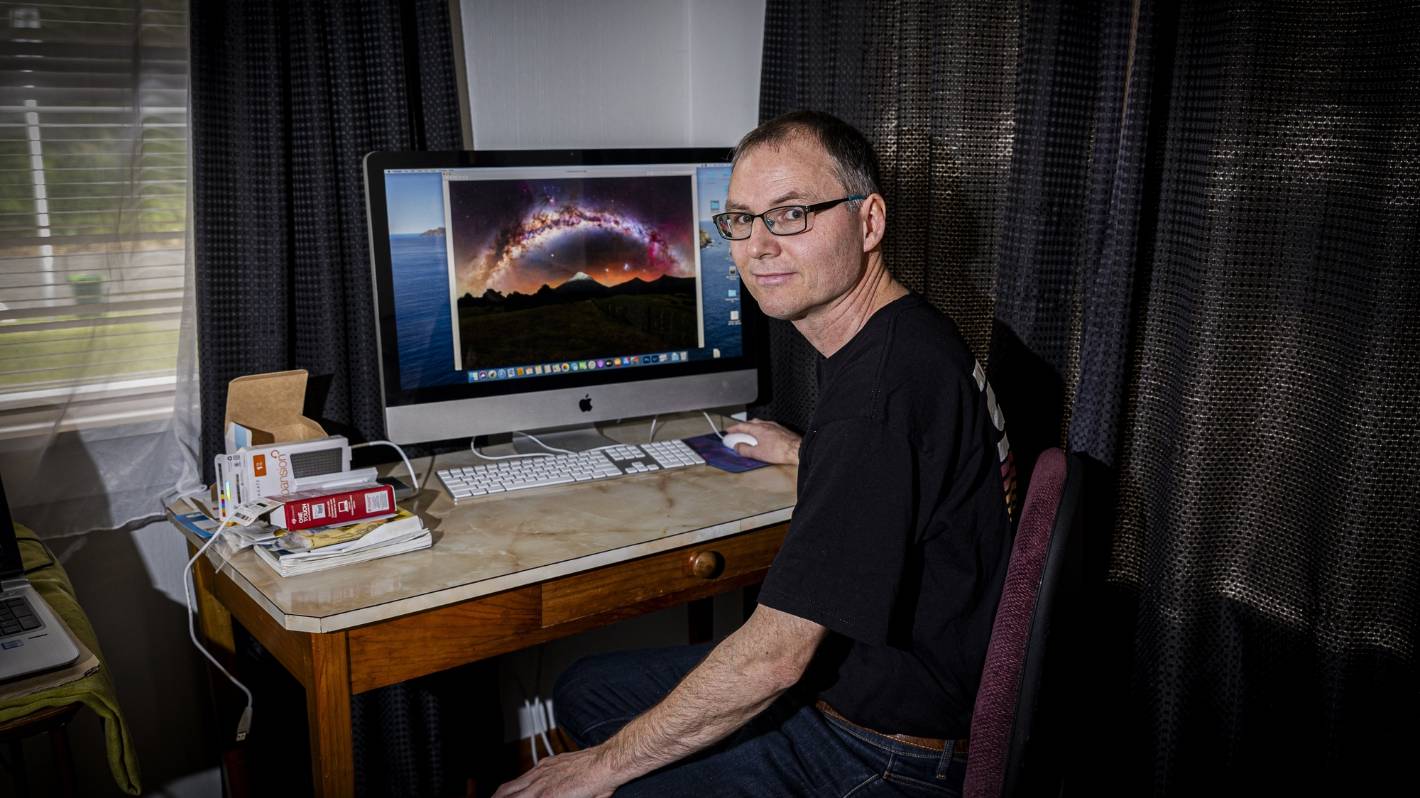[ad_1]
Brendan Larsen spends hours out in the dark photographing the night sky.
He has to time it exactly right to ensure the stars align over Taranaki Maunga for the perfect shot.
Though Larsen has only been doing astrophotography for about three years he is already making his mark.
He is part of the Taranaki Arts Trail, this year from October, 27 – 29 and November 3-5, where he displays his pictures.
And his was one of 25 photos out of more than 3000 entries to be selected in the Milky Way Photographer of the Year, an international competition.
Two other Kiwis, Tom Rae and Larryn Rae were also honoured for their work in the Milky Way contest.
It’s the number one photography competition in terms of recognition worldwide, Larsen says.
“It’s really prestigious to be included in that, and I was really blown away.”
VANESSA LAURIE/Stuff
Larsen’s photos will be part of the Taranaki Arts Trail later in the year.
Larsen, who teaches English with Literacy Aotearoa, helping adults who struggle with reading or writing, and also does security guard work, got into astrophotography after he joined the Taranaki Astronomical Society in New Plymouth.
“I’d never been to an observatory before so went along and really enjoyed it. They had a camera hooked up to the telescope.”
As he got into his new hobby his little “point and shoot” wasn’t cutting it, so he invested money in good equipment and invested time in watching hours of YouTube videos to learn the craft.
For a photo of the Milky Way arching over Maunga Taranaki he took shots of the stars for four hours, spent 30 minutes photographing the foreground and then seven hours editing them together.
VANESSA LAURIE/Stuff
Larsen has a tracker on his camera that moves at the same speed as the stars.
To get the best shots he uses a tracker on the camera that moves at the same speed as the stars, he says.
“But you end up with a blurry foreground. So you photograph the stars – a 2 minute shot here, then here, then here…until you get enough of the sky. And then you stitch them altogether with a programme I’ve got. Then you turn the tracker off and do a two or four minute shot of the foreground, or a panorama, about 10 shots, two minutes for each shot, then blend them in photoshop.”
There’s a lot of editing involved, he says.
“But by doing the longer exposure shots with the tracker you get a lot more colour and a lot more detail in the shots. You can’t see the colours in the Milky Way with your eyes, but the camera picks them up.”
Editing like this is allowed in the competitions. But joining things that don’t naturally belong together isn’t.
“I’ve seen a shot with the Pouakai tarns and the mountain. The Milky Way was perfectly lined up over the mountain. Straight away I knew it was fake, because the Milky Way doesn’t line up there. It rises in a totally different direction.”
Larsen went as far as taking a video to prove the moon really was rising over Taranaki Maunga as portrayed in one photo he took, he says.
“I’ve calculated exactly where to be to get the moon alignment like that. A big part of the challenge is being in the right place at the right time. I’d be out more often if the weather was good, but you’re lucky if you get one day a month. You don’t want even a little bit of cloud. If a cloud moves in front of a long exposure shot it ruins it.”
VANESSA LAURIE/Stuff
To get this photo he took shots of the stars for four hours, spent 30 minutes photographing the foreground and then seven hours editing them together.
He has a lot of fun working out where in Taranaki he’ll get the best views and what time he needs to be there to get the moon or Milky Way lined up where he wants.
And they’re not the only calculations Larsen needs to do to get the perfect shot. The tracker on the camera has a motor inside that rotates at the speed of the rotation of the earth.
“So if you left it going for 24 hours, it would go all the way into a full rotation. With this kind of tracker you have to point it to the south celestial pole, so it’s lined up with the axis or rotation of the earth. I’ve got a hiking sort of compass, and I’ll find where south is, and I’ll line it up.
Brendan Larsen
Larsen went as far as taking a video to prove the moon really was rising over Taranaki Maunga as portrayed in this photo.
“Once you learn it’s easy to get it to exactly the same speed as the earth is rotating and exactly same speed as the stars are moving. If you don’t do that, and you take more than a 20 or 30 second shot, you get star trails in the shot.”
Most people won’t notice, but the stars would be oblong shapes not circles, he says.
“If you do a one or two minute shot like I do with the tracker it’s all messy, it’s all like streaks. One thing that makes a good astro photo is having the stars pin point.”
[ad_2]
